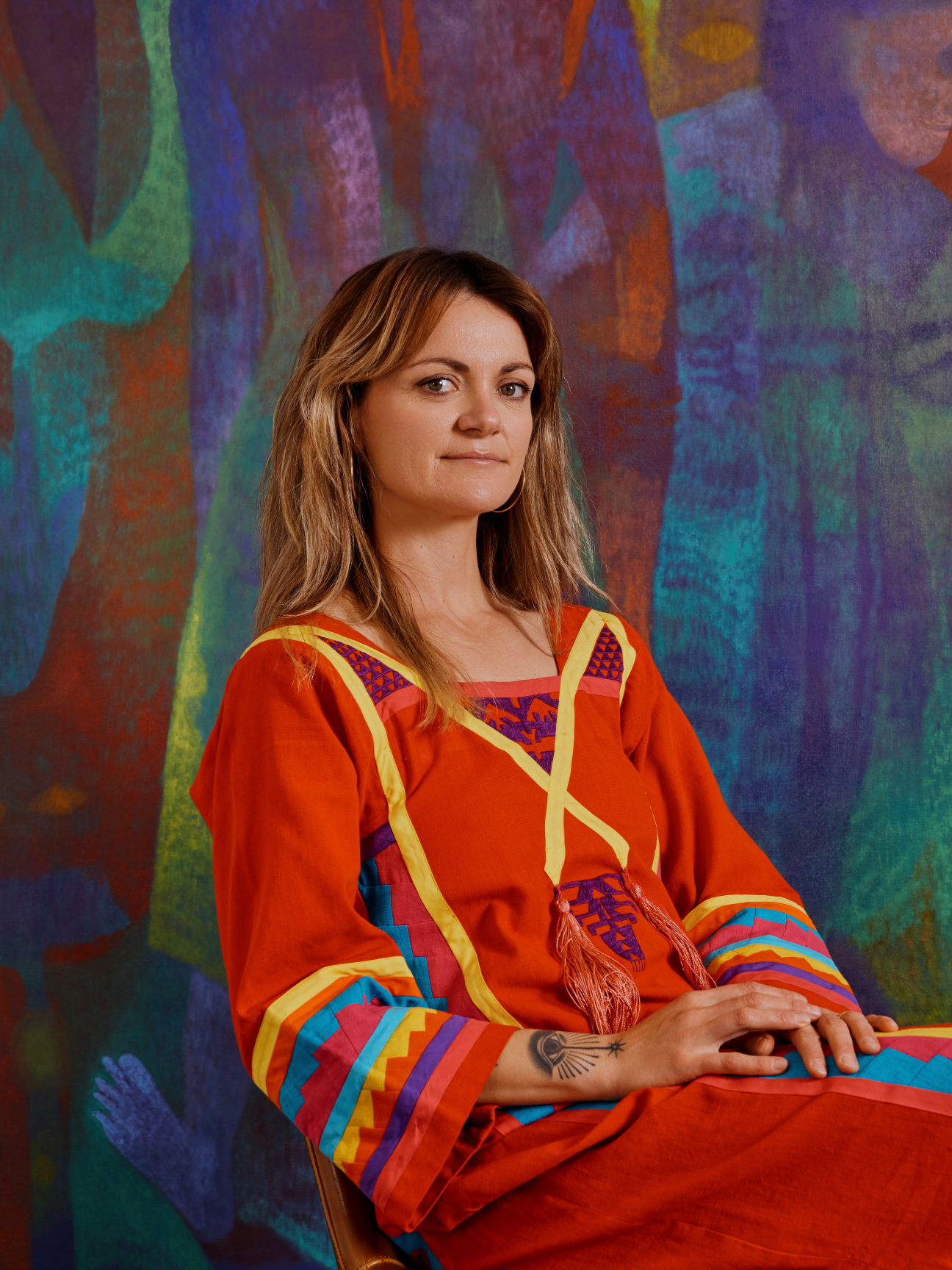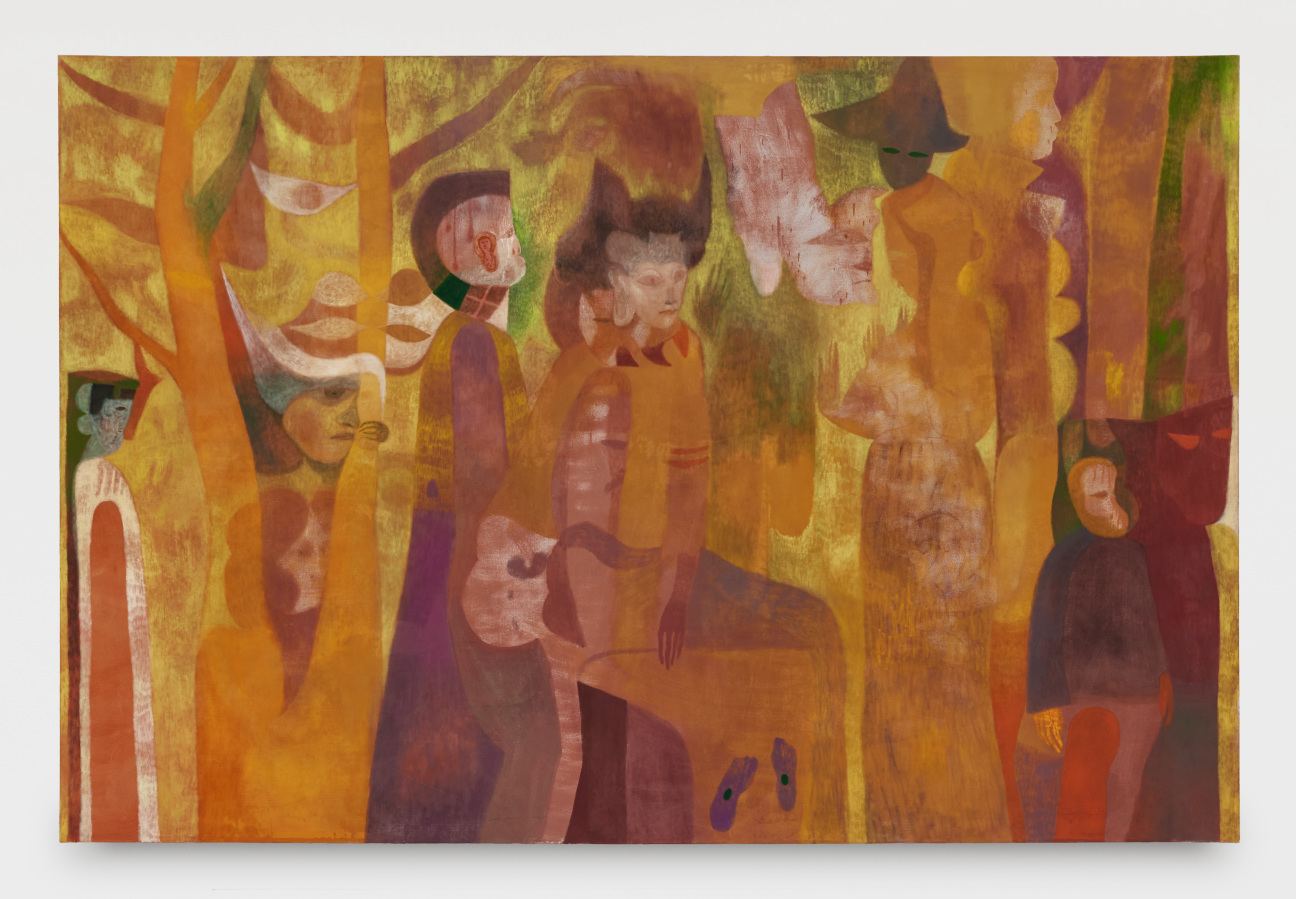
Maja Ruznic paints worlds of feeling. To describe her work as straddling abstraction and figuration, which critics often do, is to neglect her inventiveness. Rather than existing between two states, Ruznic creates an alternate one, simultaneously recognizable and uncanny. Hers is an emotionally charged dreamworld made material, which, rather than dissolving with your attention as a dream might upon waking, only grows more engaging, complex, and inhabitable the longer you look.
When we met this summer, Ruznic was showing at three venues in New York. She had just returned home to New Mexico after opening her solo show, “The World Doesn’t End,” across two of Karma’s East Village spaces. She was one of only a few painters featured in the 2024 Whitney Biennial and was also included in the group exhibition “Mother Lode: Material and Memory” at James Cohan in New York. We talked as she prepared for her first solo in Berlin, at Contemporary Fine Arts this fall.
Writers have the phrase “speculative fiction” to describe works that envision fantastical or imaginative realms, a genre that includes everything from fairytales to magical realism. In her paintings, Ruznic conjures her own distinctive universe, including a set of recurring characters. (She keeps separate notebooks to chronicle a core group of four of them, she tells me, reaching for a notebook at the end of her work bench.)

Ruznic’s figures combine the patterned geometry of Gustav Klimt and the surreal physiology of Leonora Carrington, all while emerging from a Rothko-like vapor of Color Field painting. While her works seem to synthesize a century and a half of art history, there is nothing academic about them.
As a child, Ruznic fled Bosnia and the genocide that began there in 1992, living for three years in refugee camps before arriving in the United States. “I’ve often thought the imaginative space that feels so comfortable to me, came to me from trauma,” the artist says. At age nine, in an Austrian refugee camp, she remembers being given a set of watercolors, as well as a red lamp that a doctor told her would treat depression. Painting, and the use of color, became a way of both exploring and representing her emotions. “I feel like I really lucked out in that … to deal with the trauma, I became obsessed with creating worlds,” she says.
While Ruznic’s narrative arc—from fleeing war as a child to becoming an artist in the United States—is a compelling one, it would be a mistake to reduce her achievements to a trauma plot.

I first encountered Ruznic’s paintings at Karma in 2022. Her suite of large canvases captured the sleepwalking state of early parenthood, of being up in the middle of the night and exhausted during the day. Dominated by somber purples and greens with flashes of red and yellow, the pictures told a non-linear story of a mother, a father, and a child—all shot through with tenderness and just a dash of horror. It was one of the most affecting shows I’d see all year.
In more recent canvases, Ruznic has pushed the boundaries of her visual language, creating austere and concentrated Color Field works and complex compositions of multiple figures. Take the Pietà-like central figure of Arrival of Wild Gods II, 2023, with an attending crowd of maybe-human figures framing the scene in ethereal yellow. The Berlin show, titled “Mutter”—a play on the German word for “mother” as well as for the English word for a barely audible utterance—will feature The Beginning/The End, 2023/24, with rhythmic tufts of red oil overtaking a cloud of purple on linen. Ruznic confesses that, for her, the stripped-down expanses of color are more difficult, more taxing. She can suggest a story with the figures, but in the unpopulated (or barely populated) fields of color, she intends to precisely render an intense feeling.
While the artist has never been more in demand, she seemed happy to be back in her studio in New Mexico, where she moved in 2017. Surrounded by desert and mountains and away from the competition and bustle of urban art-world centers, she’s been able to push her work further and on her own terms. “Being here,” she says, “has just expanded everything.”
"Mutter" by Maja Ruznic is on view at Contemporary Fine Arts in Berlin through Oct. 26.










 in your life?
in your life?

